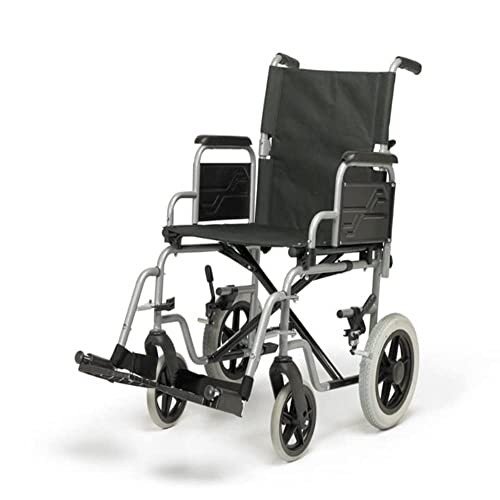What's The Reason Everyone Is Talking About Buying A Mobility Scooter Right Now
Buying a Mobility Scooter: A Comprehensive Guide
Mobility scooters have become increasingly popular as a means of transportation for individuals who may have difficulty walking due to age, disability, or other health conditions. These mobility devices are designed to provide self-reliance and ease of travel, whether for outdoor experiences or indoor navigation. However, with More hints of alternatives available, picking the best mobility scooter can be overwhelming. This article intends to use a helpful guide on buying a mobility scooter, together with FAQs to help in the decision-making procedure.
Understanding Mobility Scooters
Mobility scooters are electric-powered lorries that are designed to help individuals with mobility difficulties. They differ in design, size, and functionality to cater to various requirements. Usually, mobility scooters feature 3 or 4 wheels, a seat for the user, handlebars for steering, and are developed to browse both indoor and outside spaces.
Kinds Of Mobility Scooters
There are typically 3 types of mobility scooters, each catering to particular requirements:
Portable/Travel Scooters:
- Lightweight and collapsible for simple transport.
- Best for brief distances and travel.
- Restricted weight capacity and variety.
Mid-sized Scooters:
- Offers a balance in between portability and efficiency.
- Ideal for daily outdoor use.
- Adequate weight capability and range.
Heavy-duty Scooters:
- Designed for rougher surfaces and much heavier individuals.
- Generally have higher weight capacities and longer battery life.
- Features bigger wheels and might consist of advanced suspension systems.
Type
Features
Best For
Portable/Travel
Lightweight, collapsible
Short distances, travel
Mid-sized
Balance of portability and performance
Daily outdoor usage
Sturdy
Higher weight capability, rugged design
Rough surfaces, heavier individuals
Secret Considerations When Buying a Mobility Scooter
When choosing a mobility scooter, numerous factors need to be thought about to ensure the very best suitable for private requirements. Below is a list of crucial factors to consider:
Weight Capacity:
- Ensure the scooter can support the user's weight conveniently to avoid damage and make sure safety.
Range:
- Consider how far you will be taking a trip on a single charge. Battery variety can differ from around 10 to over 35 miles.
Size:
- Assess the dimensions to figure out whether the scooter can fit through entrances and into cars.
Surface:
- Evaluate where the scooter will mostly be utilized (pavement, lawn, rough terrain) and choose a design created for those conditions.
Storage Space:
- If the scooter needs to be stored in a small area, size may be an important aspect.
Functions and Accessories:
- Look for vital functions like adjustable seats, armrests, storage baskets, and lights.
Cost:
- Mobility scooters can vary anywhere from a few hundred to a number of thousand dollars. Evaluate your spending plan and consider financing options if necessary.
Where to Buy a Mobility Scooter
Mobility scooters can be bought from different sources, each providing different benefits. Below is a list of common purchasing alternatives:
Medical Supply Stores:
- These stores typically offer expert suggestions and the opportunity to experiment with different models.
Online Retailers:
- Websites like Amazon and specialized medical devices sites provide a vast array of choices, however buyers need to guarantee they have a return policy in case the item is not suitable.
Direct from Manufacturers:
- Buying directly enables consumers to customize their scooters, although this may take additional time.
Used Equipment Stores:
- Purchasing an utilized scooter can save money, however it's important to completely check the scooter's condition and battery life.
FAQs About Buying a Mobility Scooter
Q: How do I understand which size scooter is best for me?
A: The best size depends on your physical dimensions and where you prepare to use the scooter. Check the specs against your measurements and consider factors like weight and comfort.
Q: Are mobility scooters covered by insurance coverage?
A: Coverage depends on your insurance coverage strategy. Medicare may cover scooters under specific medical conditions. It's a good idea to contact your supplier in advance.
Q: How quickly can a mobility scooter go?
A: Most mobility scooters have an optimal speed of around 4 to 8 miles per hour, depending upon the design and regulations in your location.
Q: What upkeep is required for mobility scooters?
A: Regular maintenance consists of examining tire pressure, keeping the battery charged, making sure connections are clean, and inspecting mechanical parts for wear and tear.
Q: Can I take my mobility scooter on public transportation?
A: Many public transportation systems accommodate mobility scooters, however you ought to examine the particular guidelines of your regional transit authority.
Buying a mobility scooter can considerably boost the quality of life for people with mobility challenges by providing self-reliance and ease of movement. By understanding the types available and thinking about essential aspects such as weight capability, variety, and designated use, potential purchasers can make informed choices. With proper research study and consideration, one can discover the ideal mobility scooter to best suit their requirements, allowing them to navigate the world around them with self-confidence.
